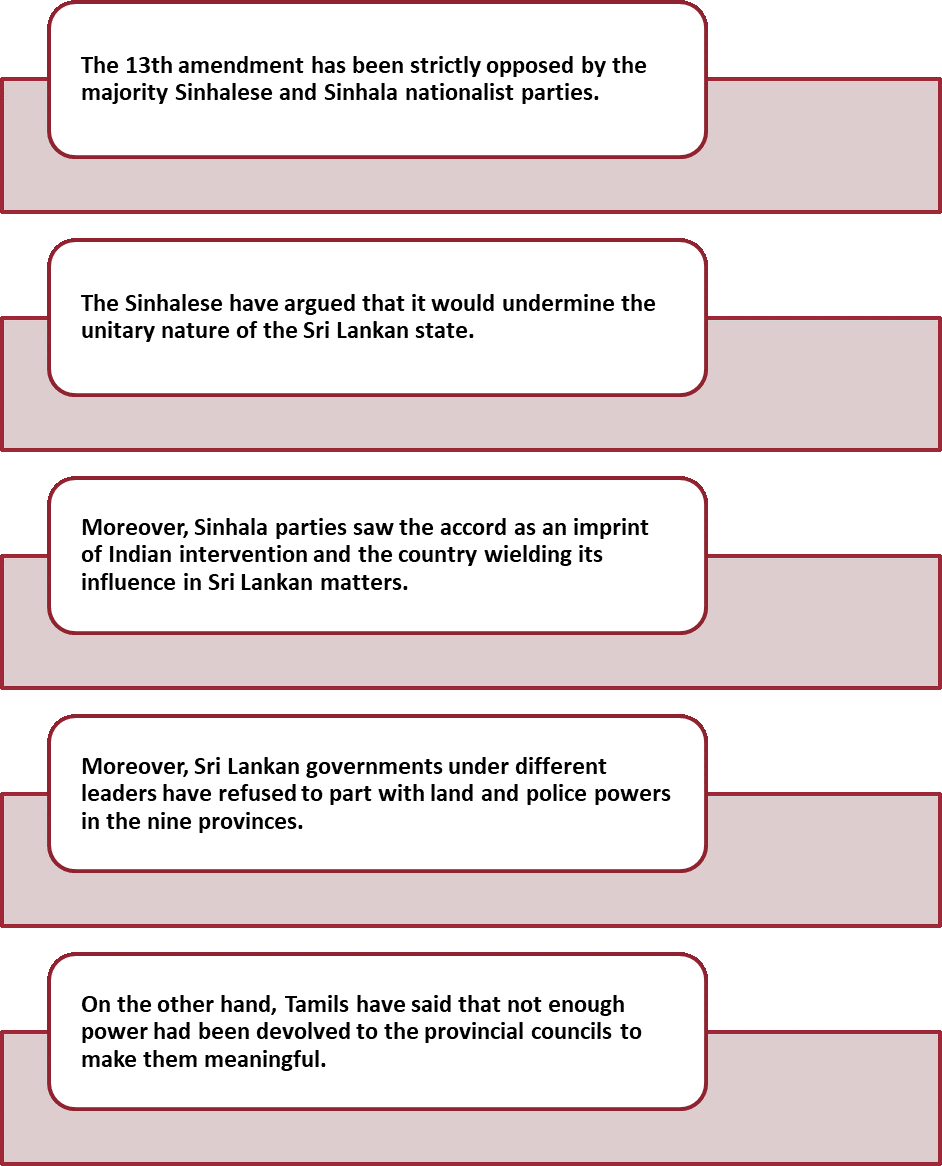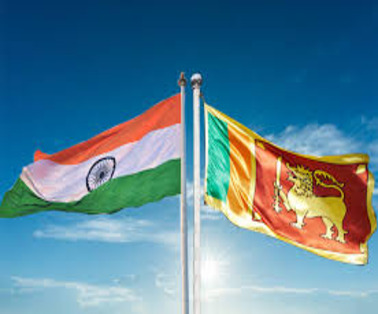New turn in India and Sri Lanka relations, The Tamil National Alliance (TNA) has rejected the Sri Lankan President’s offer to implement the 13th Amendment of the Sri Lankan Constitution without police powers.
Key Developments in the India-Sri Lanka Relationship
- This rejection by the TNA assumes significance before the President’s scheduled visit to India, as India has consistently emphasized the “full implementation” of this legislation
- Ever since the signing of the accord, India has stressed the importance of the implementation of the 13th amendment besides giving attention to the requirements of the Indian-origin Tamil community;
- India has underscored that to create an united Sri Lanka, devolution of powers to the Tamil regions was necessary for long-term reconciliation of the issue between the ethnic communities.
- In 2022 as well as 2021, India had urged Sri Lanka to implement the 13th amendment at the United Nations Human Rights Council (UNHRC) session at Geneva.
What is the 13th Amendment to the Sri Lankan Constitution?
- In a bid to resolve the ethnic conflict in Sri Lanka between Tamils and the Sinhalese, the 13th amendment was passed in 1987 as part of the Indo-Lanka Accord
- It was signed by the then Prime Minister Rajiv Gandhi and Sri Lankan President JR Jayawardene.
- At that time, the Tamil insurgency was gathering momentum, which later turned into a bloody conflict between the government and the Liberation Tigers of Tamil Eelam (LTTE).
- The LTTE demanded a separate Tamil state and ran a military campaign before its collapse in 2009 following the killing of Velupillai Prabhakaran.
- Since Sri Lanka gained independence from the British in 1948, the Tamils have demanded political autonomy in the northern and eastern regions.
- It must be noted that all powers in Sri Lanka are concentrated in the centre.
- The 13th amendment provides for a provincial council system and devolution of powers over land, the police, education, health, agriculture, housing and finances to the nine provinces of the country, including Sinhala majority areas.
- However, its provisions were never fully implemented by successive Sri Lankan governments.
- The amendment also provided for making Tamil an official language, and English as a link language.
Issues With The 13th Amendment

Key Aspects Of India-Sri Lanka Relations
- India is Sri Lanka’s closest neighbour and the relationship between the two countries is more than 2,500 years old built upon a legacy of intellectual, cultural, religious and linguistic interaction.
- In recent years, the relationship has been marked by close contacts at the highest political level such as Bilateral exchanges at various levels
Economic ties:
- India is Sri Lanka’s third largest export destination, after the US and UK.
- More than 60% of Sri Lanka’s exports enjoy the benefits of theIndia-Sri Lanka Free Trade Agreement. India is also a major investor in Sri Lanka.
Defence:
- India and Sri Lanka conductjoint Military (Mitra Shakti) and Naval exercise (SLINEX).
Cultural Relations:
- The Cultural Cooperation Agreement signed by the Government of India and the Government of Sri Lanka in 1977 forms the basis for periodic Cultural Exchange Programmes between the two countries.
- In July 2020, the Government of India declared the Kushinagar Airport in India, the place of Lord Buddha’s Mahaparinibbana, as an international airport, to allow Buddhist pilgrims from around the world to visit the revered site associated with Lord Buddha with ease – first inaugural flight from Sri Lanka
- Swami Vivekananda Cultural Centre (SVCC) – the cultural arm of the High Commission of India, Colombo, has been playing a key role in strengthening these ties and promoting people-to-people contacts between India and Sri Lanka since its inception in 1998.
- India launched the e-Tourist Visa (eTV) scheme for Sri Lankan tourists in 2015.
To Download Monthly Current Affairs PDF Click here
Get Inspiration from CLAT 2025 Topper
Click here to get a free demo
Everything About CLAT 2025



